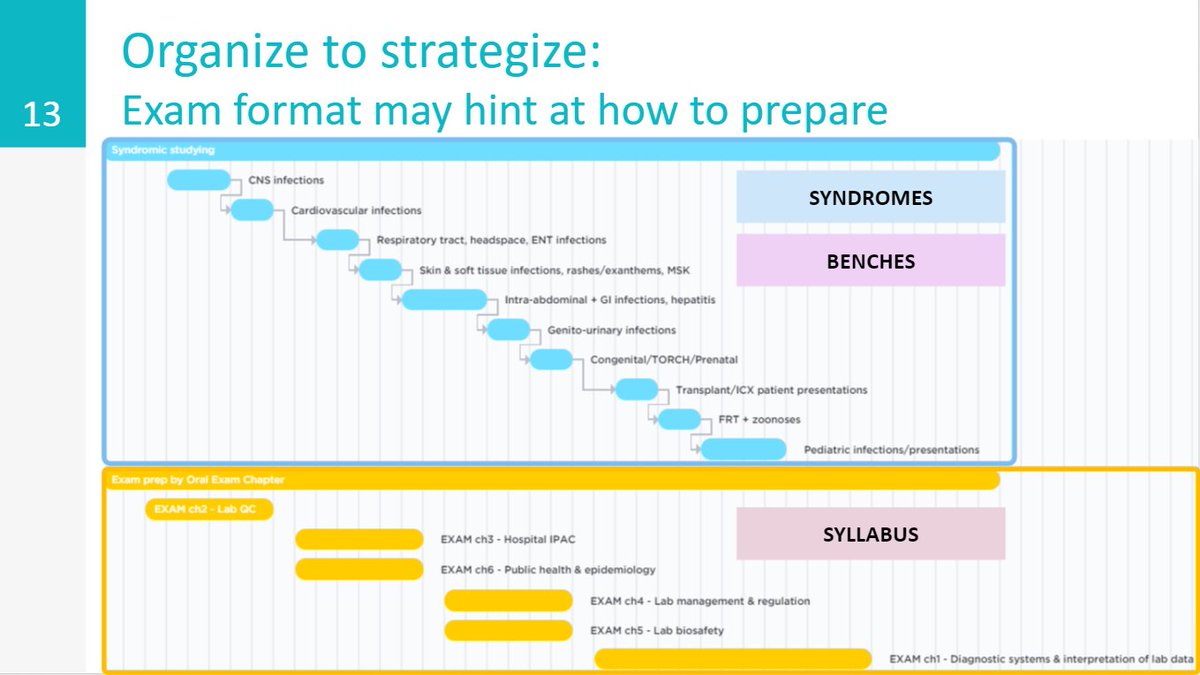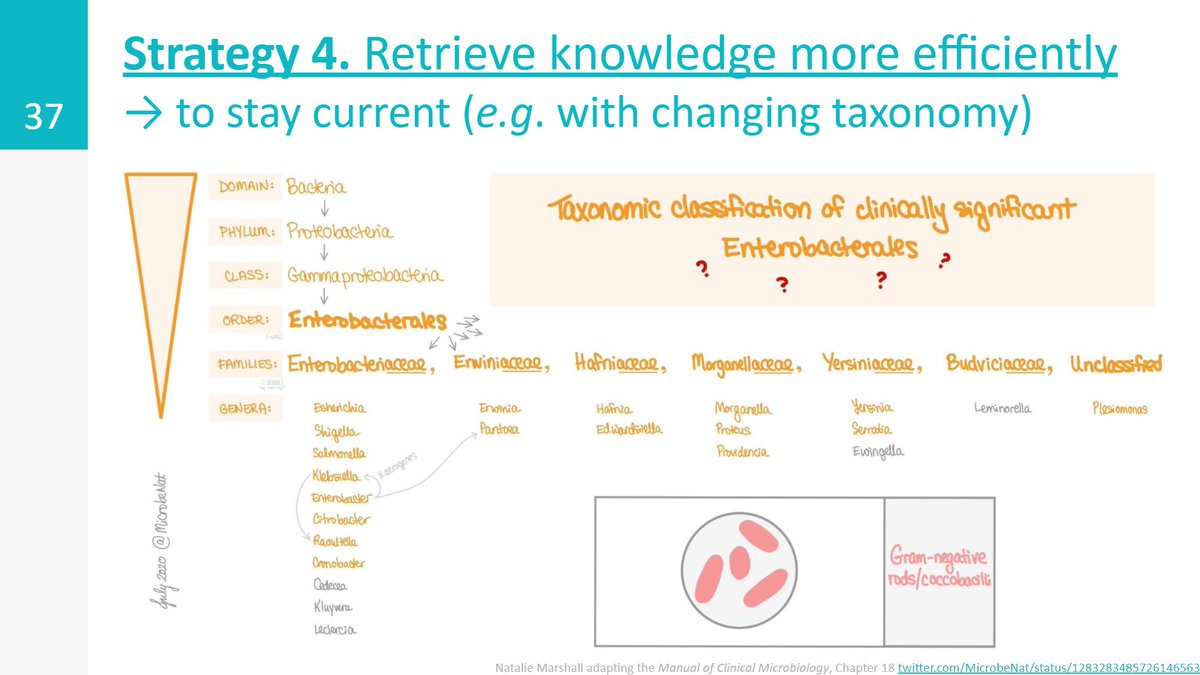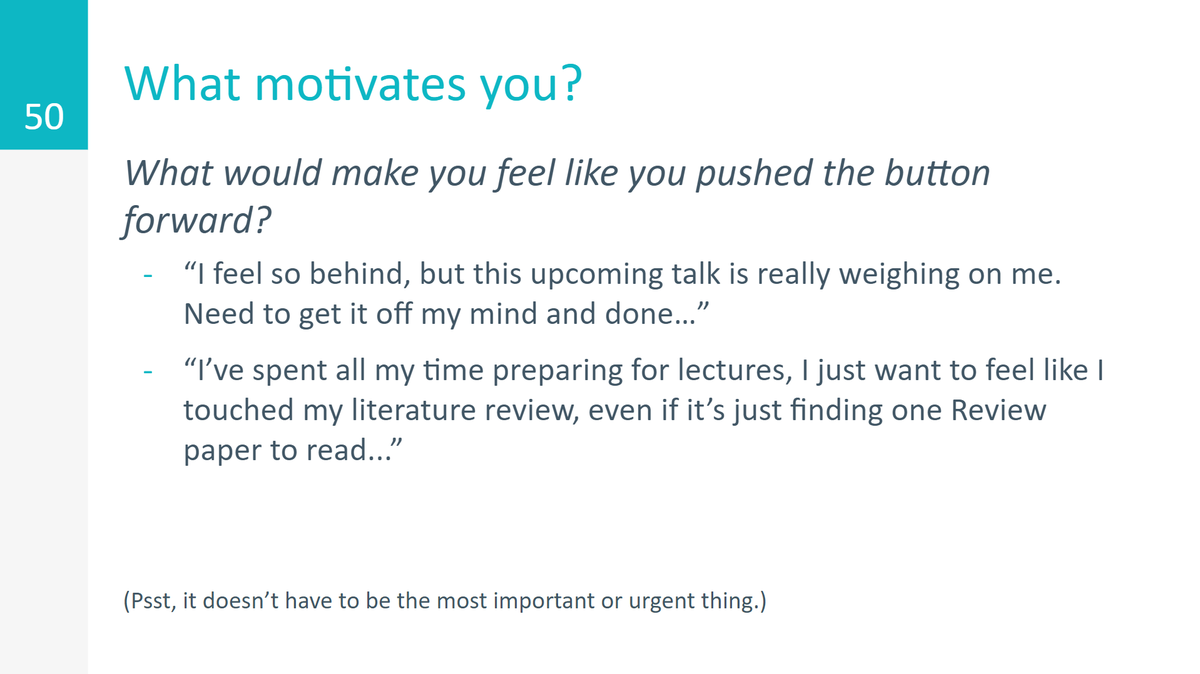
Today's talk now posted for my FAVOURITE topic:
How to study & learn clinical/medical #microbiology.
🧠What to know
🧠How we learn
🧠Free resources
🧠Motivation
🧵below & slides available free: tinyURL.com/LearningMicro
#IDTwitter #MicroMedEd #ASMCPEP #clinmicro #ASMClinMicro
How to study & learn clinical/medical #microbiology.
🧠What to know
🧠How we learn
🧠Free resources
🧠Motivation
🧵below & slides available free: tinyURL.com/LearningMicro
#IDTwitter #MicroMedEd #ASMCPEP #clinmicro #ASMClinMicro

This talk expands on content from my ASM post from June.
asm.org/Articles/2021/…
... which outlined traits of experts & how we can use them to learn (eg. with visual tools):
👉These slides (summarized next) put this in the context of preparing for clin/med micro/ID exams.
2/14
asm.org/Articles/2021/…
... which outlined traits of experts & how we can use them to learn (eg. with visual tools):
👉These slides (summarized next) put this in the context of preparing for clin/med micro/ID exams.
2/14

🧠WHAT DO YOU NEED TO KNOW?
Your exam will have a syllabus & information about the exam format itself. These are key resources. But remember that you're preparing for both the exam and your career beyond that.
3/
Your exam will have a syllabus & information about the exam format itself. These are key resources. But remember that you're preparing for both the exam and your career beyond that.
3/

Preparing for your exams (and in your training program) will require many resources, which can be organized into:
🔵 CLINICAL/syndromic
🟣 LABORATORY/benches
🔴 SYLLABUS/theory + format
This can inform how you prepare.
4/

🔵 CLINICAL/syndromic
🟣 LABORATORY/benches
🔴 SYLLABUS/theory + format
This can inform how you prepare.
4/


🧠HOW DO YOU LEARN?
The way you learned best before probably still works best for you now.
Awareness of the levels of learning may help! Just compiling notes isn't learning, it's important to understand so you can apply what you know & have it ready when you need it.
5/
The way you learned best before probably still works best for you now.
Awareness of the levels of learning may help! Just compiling notes isn't learning, it's important to understand so you can apply what you know & have it ready when you need it.
5/

Expertise can be BUILT strategically.
Here are examples of how each of 4 expert traits can be used to build expertise ...specifically in CLINICAL/MEDICAL MICROBIOLOGY🦠& ID.
This can also help you identify gaps, ask good questions, & take initiative in your learning.
6/

Here are examples of how each of 4 expert traits can be used to build expertise ...specifically in CLINICAL/MEDICAL MICROBIOLOGY🦠& ID.
This can also help you identify gaps, ask good questions, & take initiative in your learning.
6/


⭐EXPERT STRATEGY #1⭐
Identify meaningful information (so you can simplify complex information into patterns & categories).
Here, @cullen_lilley shows how much information you can get from just the tip of the tail in microfilaria!
7/

Identify meaningful information (so you can simplify complex information into patterns & categories).
Here, @cullen_lilley shows how much information you can get from just the tip of the tail in microfilaria!
7/
https://twitter.com/cullen_lilley/status/1378071025427091456

⭐EXPERT STRATEGY #2⭐
Organize your knowledge (so you can connect related concepts).
Here, I've organized the rickettsiae & relatives into groups, and connected their diseases & vectors. Infinitely more useful!
8/

Organize your knowledge (so you can connect related concepts).
Here, I've organized the rickettsiae & relatives into groups, and connected their diseases & vectors. Infinitely more useful!
8/
https://twitter.com/MicrobeNat/status/1393997674492301318

⭐EXPERT STRATEGY #3⭐
Cue information when it's relevant (so you can build a better differential diagnosis, for example).
Here, Dr. @VarunPhadke2 demonstrates what information is most valuable when a patient's blood culture is positive.
9/

Cue information when it's relevant (so you can build a better differential diagnosis, for example).
Here, Dr. @VarunPhadke2 demonstrates what information is most valuable when a patient's blood culture is positive.
9/
https://twitter.com/VarunPhadke2/status/1186491791538831361

⭐EXPERT STRATEGY #4⭐
Retrieve knowledge more efficiently by organizing & connecting these ideas (e.g. to stay current).
Here, I show how I (try to) keep up with taxonomic changes, by remembering where they came from & where they went.
10/

Retrieve knowledge more efficiently by organizing & connecting these ideas (e.g. to stay current).
Here, I show how I (try to) keep up with taxonomic changes, by remembering where they came from & where they went.
10/
https://twitter.com/MicrobeNat/status/1283283485726146563

🤔So how do we apply this to syndromes?
Here, you can see how a learner can build their knowledge of syndromes for each body system by starting to ask novice questions (grey) and progressing to expert questions (red) with a deeper & broader understanding building.
🔺🧗♀️
11/


Here, you can see how a learner can build their knowledge of syndromes for each body system by starting to ask novice questions (grey) and progressing to expert questions (red) with a deeper & broader understanding building.
🔺🧗♀️
11/



Building syndromic expertise is supported by tools in clinical diagnostic reasoning, which dovetail well with these 4 expert strategies.
More detail in the presentation, including resources like @CPSolvers, @febrilepodcast, and their respective communities on+off Twitter!
12/



More detail in the presentation, including resources like @CPSolvers, @febrilepodcast, and their respective communities on+off Twitter!
12/




And, if you're preparing for exams, don't forget about:
🧠HOW YOU'RE MOTIVATED
&
🧠AVAILABLE RESOURCES
I have listed MANY free resources (&featured some special ones) in the full talk:
tinyURL.com/LearningMicro
13/


🧠HOW YOU'RE MOTIVATED
&
🧠AVAILABLE RESOURCES
I have listed MANY free resources (&featured some special ones) in the full talk:
tinyURL.com/LearningMicro
13/



Lastly, check out the full talk (tinyURL.com/LearningMicro)
& feel free to reach out to me. I am very new to the field, but fresh out of studying for my Board Exams in Clinical Microbiology (✅passed), and happy to talk about learning. Enjoy the slides!
14/14
& feel free to reach out to me. I am very new to the field, but fresh out of studying for my Board Exams in Clinical Microbiology (✅passed), and happy to talk about learning. Enjoy the slides!
14/14
• • •
Missing some Tweet in this thread? You can try to
force a refresh







